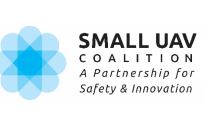In the USA the Small UAV Coalition (http://www.smalluavcoalition.org/wp-content/uploads/2018/07/Small-UAV-Coalition-Letter-to-Secretary-Nielsen-7.11.18.pdf) has sent a letter to Kirstjen M. Nielsen, Secretary of Homeland Security, urging the Federal Aviation Administration to publish its plans for remote identification and tracking requirements as part of a programme to address the problem of rogue operators using drones as threats to national security.
“The Small UAV Coalition commends your leadership in calling on Congress to provide federal law enforcement and homeland security officers with the authority to protect Americans from harmful and dangerous drone operators in your July 4, 2018 op-ed, The U.S. isn’t prepared for the growing threat of drones. Congress has a duty to provide these important authorities.
“However, two major steps must occur contemporaneously with a law granting the Departments of Homeland Security (DHS) and Justice (DOJ) counter-UAS authorities: The Federal Aviation Administration (FAA) must issue overdue remote identification and tracking requirements and Congress must enable the FAA to require all UAS operators to abide by those requirements.
“Federal law enforcement agencies must be able to use counter-UAS technology to remotely identify a UAS to assess whether there is a threat in order to provide an appropriate response. The FAA chartered an Aviation Rulemaking Committee (ARC) in June 2017 comprised of representatives from the aviation community (manned and unmanned, including many Small UAV Coalition members), as well as academics, researchers, standards groups, and law enforcement. The ARC delivered its recommendations in September 2017, but to date, the FAA has not moved forward with a rulemaking.
“Congress must ensure the FAA’s remote identification rulemaking will cover all UAS operations by reforming what is known as Section 336, a 2012 law that precludes the FAA from regulating so-called “model aircraft.” Model aircraft include more than a million recreational drones purchased at retail stores over the past few years, which comprise a significant percentage of the vehicles in the airspace. The FAA’s remote identification and tracking rule should apply to all UAS that must be registered with the FAA, and this requires legislation.
“The Coalition urges Congress to close the Section 336 loophole in any moving legislation that reaches the President’s desk to ensure the FAA expedites a remote identification and tracking rulemaking that will meet the needs of both law enforcement and the public….As you are aware, the national security community has placed a hold on all enabling FAA drone regulations until the FAA has imposed remote identification requirements and Congress granted counter-UAS authority. Once this hold is lifted, the vision of routine UAS operations over people, beyond the visual line of sight, at night, and delivering packages, as well as other innovative use cases, can be realized. Importantly, this would include the necessary humanitarian missions to offer unmatched assistance during natural disaster response and recovery.”




